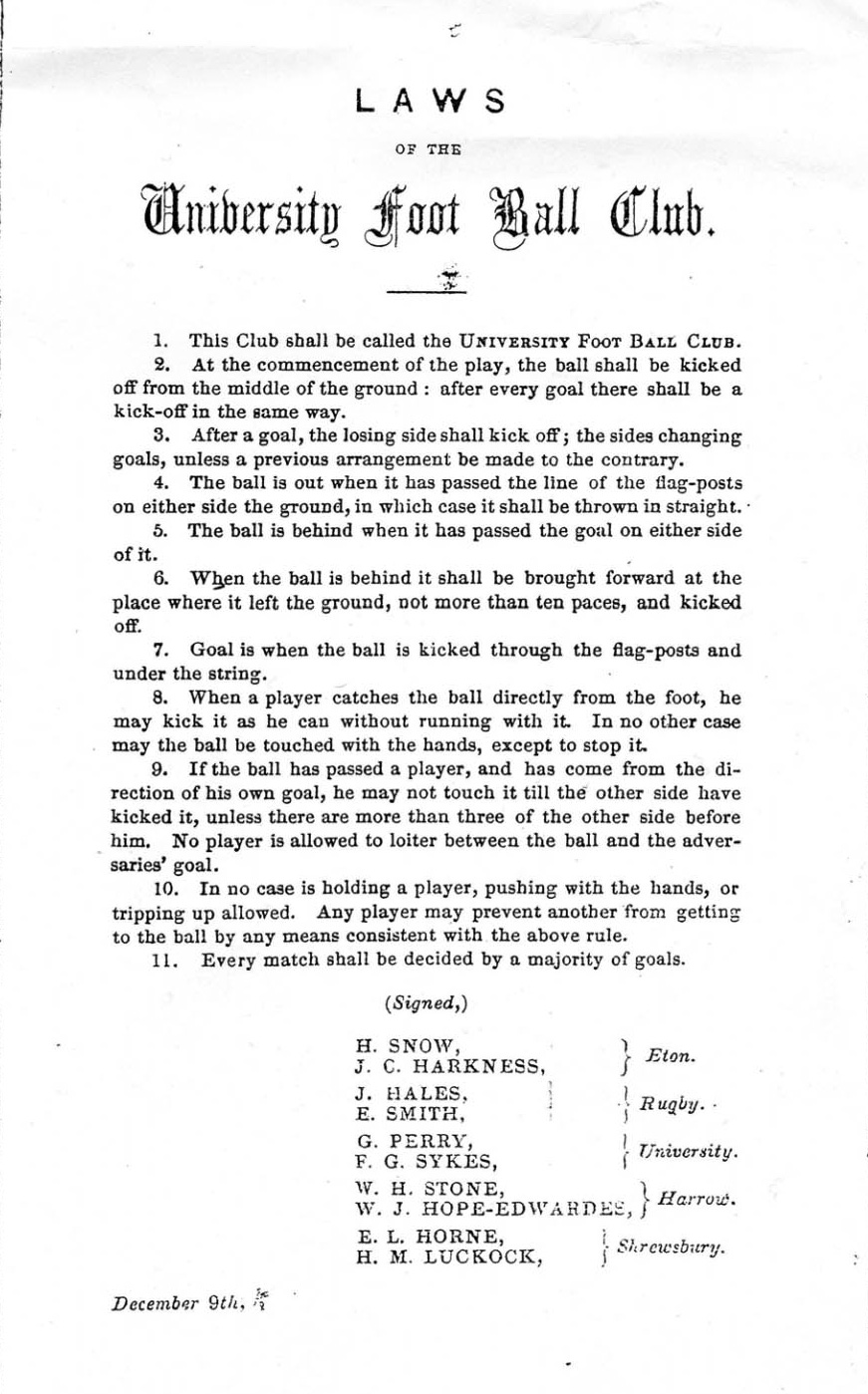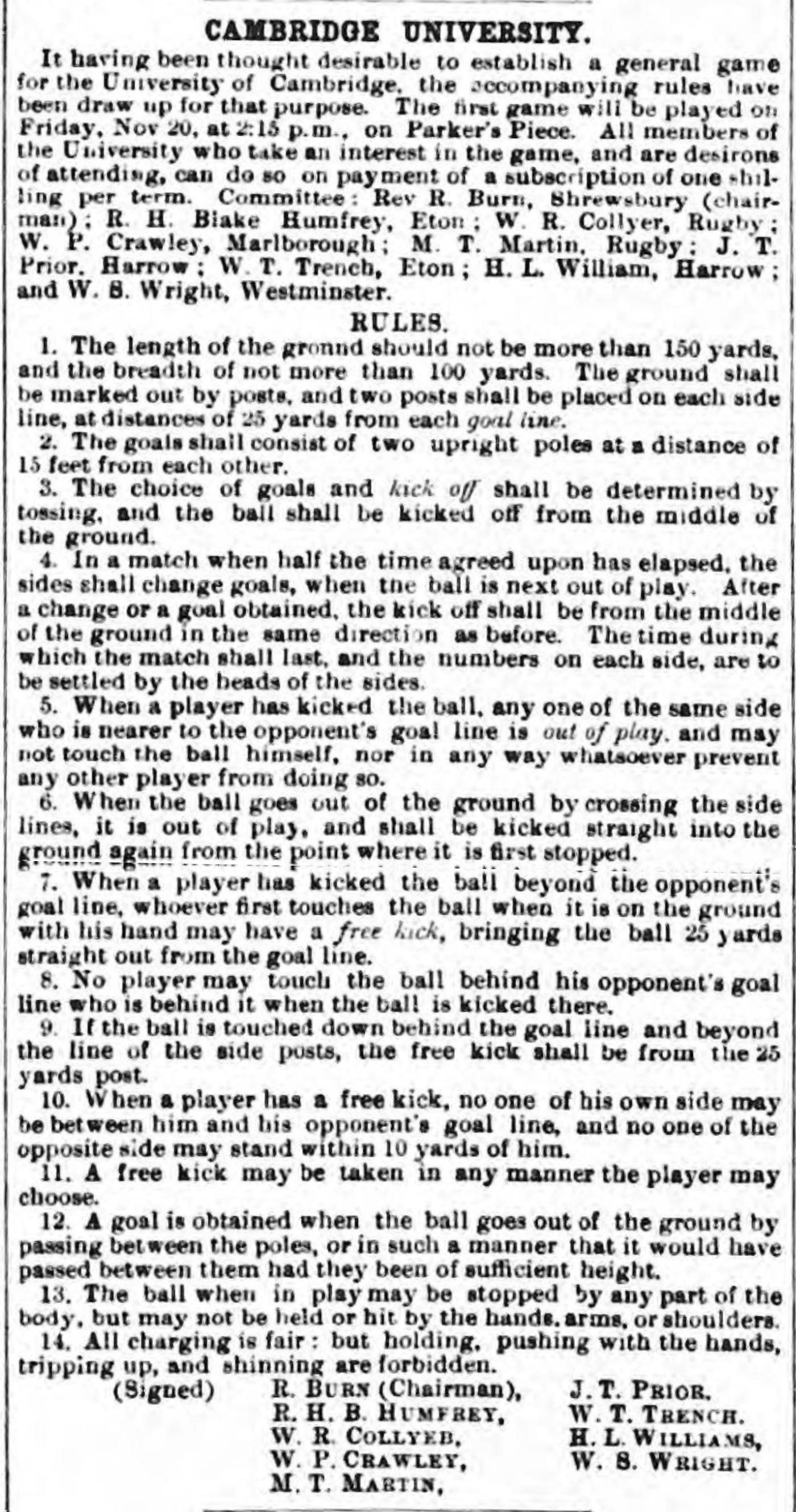The Last Hurrah Of The Cambridge Rules
We’ve discussed the enormous effect that the Rugby game had on the early development of football. Actually, the old Cambridge game wound up having a much larger impact, especially after 1866.
The oldest version of the Cambridge rules looks like this:
Note in particular the 7th rule, which indicates that goals were scored under a crossbar (or string), not over it as in the case of rugby. This code also has the 3 defender offside rule instead of requiring the entire side to be behind the ball.
This version also includes an early example of a fair catch (or “mark”).
The rules were rewritten and published in 1863:
This version includes the rugby touchdown (rules 7 and 9) and the rugby offside (rule 5). The fair catch, however, is missing. It’s also interesting to note that there was no height to the goal per rule 12.
When the Football Association considered both the Cambridge and the Rugby rules in November 1863, the Cambridge prohibitions on kicking the shins and carrying the ball prevailed. Per Wikipedia:
Two major rule changes that the Football Association laws made to the Cambridge laws were allowing the ball to be caught (that missing fair catch) and changing sides every time a goal was scored.
The final Cambridge set of rules in 1867 show even more rugby influence:
Rule 7 is the “touchdown” rule that was missing in the earlier Cambridge rules, and is another sign of the strong Rugby influence.
In the end, a Cambridge team joined the Rugby Union in 1872 following the final break between rugby and association football in 1871. The remaining football players at Cambridge wound up adopting the Football Association rules when the school entered the 1873-74 FA Cup.







